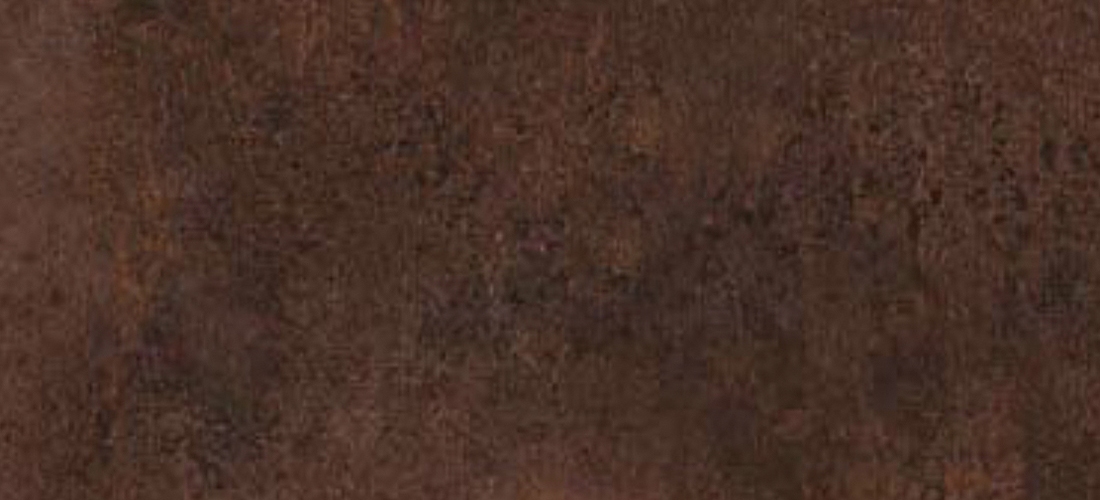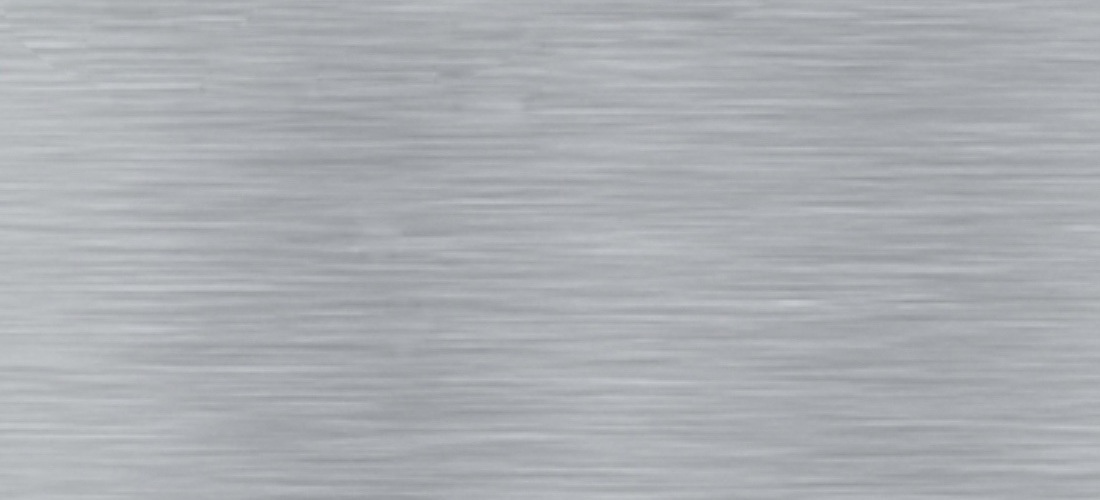Metals
Aluminum is considered one of the youngest metals, the development of which began relatively recently, and its use in global purposes began only in the middle of the 19th century. Today, about 26 million tons of primary aluminum is produced annually in the world.
The metal owes such an original name to Alum and aluminum sulfate, which first began to be used many centuries ago in the medieval world for pharmaceuticals – medicines and a wide variety of tinctures were made from it.
This type of metal has small weight and perfect corrosion resistance. A thin layer of oxide, which covers aluminum from oxidation, is responsible for this. Aluminium has excellent conduction of of heat unlike many types of metals, and also adopts a various form selection method when working with aluminum sheet and pipes, for this versatility it is very much loved by the automotive industry and development.
This metal is recyclable, very cheap and practical, mainly due to the fact that it weighs 60-70% less than other metals. Industrial operations, such as melting, require a relatively small amount of electricity.
Aluminiumis perfectly assembled and suitable for the widest distribution on an industrial scale.
Due to its softness and durability, aluminum is very easy to work with cutting tools, laser devices and other suitable equipment. After cleaning aluminum, you can hide the traces of welding and perfectly put it into state of a pipe or metal sheets. If aluminum is processed in several stages, its structure can be harden and resistance to the influence of the external environment can be increased.
Aluminum has a wide range of industrial processes, including extrusion, melting, forging and more, depending on the required production approach.
Metal is widely used in roofing and house construction, also it is popular as the basis for the frame of a wide variety of furniture and window fittings, due to its versatility, low weight and design style.
It has also proven itself in the manufacture of building products and such as ladders, railings, cabinet bases and middle floors in domestic and industrial applications.
In terms of use in consumer electronics, the lightweight and durable material is the main component of washing machines, refrigerators, floor lamps and kettles on a variety of components for the last 40 years.
Its versatile light chrome hue keeps it looking fresh and shine for a long time and remains a versatile metal for a variety of uses.
It can be changed at the discretion of the tasks that face industrial production and purposes of use, processing with the help of anodizing, powder or coating with liquid glass or zinc to increase the service life. It can be processed in a variety of ways, from forging and crumpling to bush hammering and welding into almost any shape that is required by household or business tasks.
In the periodic system of Mendeleev, this metal is known under the number 13 and is written under the name Al. Unlike titanium, cast iron or zinc, for example, its weight is extremely low and is only 2.7 grams per cm3. That characteristic makes aluminum so valuable, practical and versatile for domestic and industrial use.

Cor-ten Steel
COR-TEN steel appeared in the industrial industry less than a hundred years ago – in 1933 the United States Steelel Corporation registered the rights to this metal and formed the name from two key properties of the material, which consists of: High CORrosion resistance and High Tensile strength.
The material is characterized by increased damage resistance, reliability and convenient processing.
This metal has excellent resistance to any load and is excellent for processing by the most popular methods: welding, drawing and folding. The material can be recycled countless times, it does not contain toxins and is absolutely safe to use on an industrial scale.
The required level of energy consumption for carpentry and smelting is high. COR-TEN provides top-class mechanical performance for any type of production.
Corten steel is a very handy and thoughtful material that is perfect for cutting into the shape of tubes and metal sheets. It can be used for the production of a wide variety of metal products, due to its perfect characteristics, flexibility and versatility, which has been appreciated for many years in the steel industry.
Its versatility and comfortable texture is very often used to solve artistic and architectural solutions. It resists external irritants very well, so COR-TEN steel is perfect for architecture and landscaping decoration.
This material is used in furniture when it is required to make a loft style and show the most natural materials that combine elegant coldness and luxury.
COR-TEN steel has gained its popularity in roofing and in the production of stylish stairs, its reliability and high stability are widely appreciated in the construction industry.
A distinctive feature of COR-TEN steel is the ability to self-protect against electrochemical corrosion. This effect is achieved due to a passivating compact surface layer, which consists of oxides included in the COR-TEN alloy. They prevent the spread of corrosion.
On average, the oxidation of COR-TEN steel takes about 6 months, but our specialists can reduce this period to three weeks. The finishing department achieves this by alternating between wet and dry cycles. Over time, the tone of the membrane changes from orange to dark brown.
In the event that the product is intended for indoor use, home improvement or installation in public areas, Corten steel must be protected. This will help stop the oxidation process and avoid the release of excess oxide particles.
Metal is presented in the construction industry in several formats – pipes and sheets. We are able to produce it in sheets within 5000 by 1500 millimeters. As for pipes, up to 6500 in length and 200 mm in diameter. We accept large wholesale orders so that you can meet your construction needs and buy them in large quantities.
The basis of Corten steel is low-carbon steel (iron) alloyed with 0.2-0.5% copper, 0.5-1.5% chromium and 0.1-0.2% phosphorus. Unlike light aluminum and other metals, the weight of this material is 7.9 grams per m3.

Anodized aluminum
The anodizing procedure itself was discovered in the 20s of the last century, but the method became widespread only after the war. And the first place where the method was applied was to protect the body of aircraft made using duralumin.
At the moment, the process is actively used in the UK almost in its original form, despite the laboriousness and high cost of the technology. In America, scientists preferred progress, significantly speeding up the process of obtaining material and replacing a 10% solution of chromic acid with sulfuric acid. The quality of the final product will not change at all.
Anodized aluminum is an environmentally friendly material that does not emit harmful fumes under the influence of UV rays and high temperatures. It is absolutely safe for people and the environment. A distinctive feature of the material is increased wear resistance and resistance to corrosion processes. Cracks or roughness rarely form on the surface under persistent mechanical stress. Anodized aluminum blanks can be used for a long time without losing their attractive appearance. The material does not require any special care.
In industrial conditions, the anodizing procedure can be carried out in different ways: warm, cold and hard. It all depends on the scale of production and the funds that will be spent on the implementation of the production line.
In the anodizing process, the metal not only acquires improved technical characteristics, but can also be painted in the desired color. The warm method is predominantly used for multi-colored coating, while hard anodizing is preferred in the industry. Cold technology also allows the workpiece to acquire a shade in a natural way. It will not be a wide palette of colors, but a range of tones from green to black.
Anodized aluminum has a relatively low weight, so it often serves as an alternative to other metals in the construction of metal structures. It is easy to work with, and the quality characteristics are in no way inferior to more expensive materials.
The alloy is extremely in demand in shipbuilding, since it is completely resistant to corrosion. It is from anodized aluminum that ship windows are made. Quite often, the material is used in the furniture industry and in the creation of decorative elements, in lighting engineering, architecture and design.
The material does not need pre-treatment and coating with a protective anti-corrosion layer. This means that it can be used in its original form. It is convenient and saves not only time, but also money.
If you want to give the material a certain color, you can use the standard palette of colors. All of them fit well on the surface, but the procedure will require certain labor costs. It is much easier to give the desired shade even at the stage of anodizing the material. Modern technology allows you to recreate almost any color.
Anodized aluminum has a specific gravity of 7.85 g/cm³. In the process of anodic oxidation, a special film is formed on the metal surface, which reliably protects it from negative environmental factors. Technically, the process goes like this: an aluminum billet is immersed in a solution of sulfuric acid and connected to the positive phase of the current source. The temperature range in this case is responsible for the density of the oxide deposition.

Carbon steel
Steel has been known to people since ancient times, when it was produced in crucibles and flower shops. Each nation had its own unique version of steel. The Chinese made weapons from a hardened composition, the Indians created a high-carbon version for themselves. Directly carbon steel appeared 2000 years ago in Western Tanzania. The ancestors of the Haya people obtained it through a laborious preheating process. The temperature in the melting furnaces of that time reached 1400 degrees.
Now the composition of carbon steel has changed, the material has become stronger and stronger. However, the principle of smelting has not changed much.
Carbon steel is a high strength material. It does not change its primary characteristics in the temperature range from −100 to +350°С. Beyond these values, the material begins to rapidly lose strength. Molybdenum, chromium and nickel are usually added to the alloy to increase the temperature resistance. The material is not subject to deformation even under strong mechanical loads.
Despite the high technical characteristics, carbon steel is highly susceptible to corrosion. This means that it is not recommended to use it without pre-treatment with a strong chemical composition.
Carbon steel belongs to the category of high-tech materials that lend themselves well to industrial processing. The alloy can be successfully milled without any effort or effect on the workpiece. It also perfectly tolerates rolling, drawing and forging. But with the welding procedure, you must act very carefully. First, the percentage of carbon content is studied. The more it is, the more carefully you need to act. After completing the work, the procedure for annealing and normalizing the structure should be carried out. Carbon steel lends itself well to heat treatment and does not lose its properties.
Carbon steel can be used everywhere, but it is most often used in industry. The material is suitable for the manufacture of parts for machine tools, building structures and other components. Despite the fact that the metal undergoes multi-stage processing, it does not lose its properties at all.
At home, you can see carbon steel in tools, household items or metal furniture structures. For decoration, this material is used very rarely. There are cheaper and easier to process, as well as subsequent operation options.
Carbon steel lends itself well to processing; without it, it is not advisable to use the material. For these purposes, anti-corrosion compounds or paint can be used. Under a dense coating, the properties of the material remain unchanged for a long time. The workpiece can be processed independently, but on a large scale it is better to entrust this procedure to an automated line. The method of aerosol application of the composition will make the layer uniform and eliminate the appearance of missed spots.
The specific gravity of carbon steel is 7.85 g/cm³. The alloy is obtained by processing cast iron and reducing its composition of impurities – sulfur, phosphorus and carbon. The latter is reduced to indicators that should be included in the technology. The melting procedure can be carried out in several ways: oxygen-converter, open-hearth, electrothermal. The suitable one is selected according to the possibilities of production.

The history of the appearance of cast iron dates back to the IV-th century BC, when alloys were mostly formed by accident. Having received a strong and reliable metal, people began to experiment with alloys on purpose. At first, smelting was carried out from high-phosphorus iron ores, with the advent of blast furnaces, the alloy began to be made from ores. Experimenting with the composition, it was possible to achieve a significant improvement in technical characteristics – the material became more durable, its wear resistance indicators increased.
At that time, cast iron was used to make building parts and weapons. Now the range of its application has expanded and the material is required almost everywhere.
Cast iron belongs to the ferrous metallurgy group, and its technical characteristics are similar to steel. A significant difference is only in the melting point and weight. For cast iron, it is 1200ºС, which is 300ºС less than for steel. This difference is due to the high content of carbon in the alloy. The weight of cast iron is also an order of magnitude less than that of steel.
The iron and carbon atoms do not have a very close bond, so the material is characterized by increased brittleness. It is strongly not recommended to use it where there is a constant load. It is highly likely that the material will simply crumble.
You can work with cast iron blanks on automated conveyor lines or with the help of hand tools. Laser machines will easily give the workpiece the desired shape and will not damage the texture. You can also work with cast iron by hand, but it is important not to overdo it. With excessive physical pressure, the material may simply begin to crumble.
Cast iron can be used in its original form with a matte dark surface, or it can be polished and painted. The material does not lose its physical properties in both cases.
Most often, cast iron is used in the engineering industry – crankshafts and engine elements are made from it. The alloy for such purposes can be upgraded – graphite is added to it, which increases the strength indicators. For domestic purposes, cast iron is used to create plumbing fixtures such as bathtubs, sinks, and pipes. Products from this alloy retain their appearance for a long time and do not need restoration.
Cast iron does not lose its quality characteristics when interacting with low temperatures. The alloy is often used to make parts and components for machines that will operate in harsh climatic conditions.
Cast iron can also be used to make gates and architectural monuments.
The dark matte surface of cast iron looks aesthetically pleasing, so it can be used without additional processing. If you want the material not to oxidize or acquire a certain shade, you can cover it with a special chemical composition.
On an industrial scale, this can be done by automated lines, where color, coverage intensity and other desired characteristics are set. You can paint the cast iron blank yourself, but this process will take a lot of time.
The weight of the material is a variable value, which depends on the porosity of the material and the number of atoms of bound carbon. The specific gravity varies from 7.1 to 7.5 g/cm³. This indicator may decrease during the melting process if there are impurities in the composition.
Cast iron is not subject to corrosion under moderate environmental factors. If the operating conditions are considered unsatisfactory, it is better to cover the surface with a protective layer.
Cast iron is rarely sold in sheets. Most often on the market, blanks can be seen in the form of pipes of various diameters and lengths.

410-Stainless Steel
Despite the fact that scientists announced the appearance of the alloy around 1872, archaeologists date its first mention to a much earlier period – about 1000. Even then, perhaps accidentally having received a strong and reliable alloy, arms dealers began to actively offer their customers spears from the new metal. And it was definitely popular, as a rudimentary alloy of iron and chromite was discovered during the excavations.
Time passed, and experiments on the alloy continued. Today, stainless steel can be created in a variety of modifications. The difference is the percentage of metals that are included in the composition. The technical specifications also differ slightly from this.
In order to obtain a strong and reliable alloy, the raw material is first passed through various mechanical pressure procedures. It can be drawing, folding or welding. After this, the joints, if any, are removed using the polishing procedure. All manipulations with stainless steel blanks are carried out mainly in the factory on special machines. The thing is that stainless steel is a very durable material that is very difficult to mold by hand. Automated machines, on the other hand, will make the given shape very quickly and with pinpoint accuracy.
Despite the fact that the forming process requires a lot of power from the equipment, fiber laser machines easily cope with the task. Of course, you can use argon welding, but this process will require further polishing, which can take a long time.
Stainless steel belongs to the category of precious metals, however, unlike others, it is also divided into categories. It all depends on the percentage of its constituent components.
Most often, 430 stainless steel is used to create bar furniture and profile equipment. The material has proven itself in the process of operation and fully justifies its cost. 430 stainless steel is heat resistant and is often chosen for industrial equipment.
The impact on the surface of salts and acids, from which the material begins to break down, is undesirable. This means that it is better to refrain from using stainless steel 430 for decoration of pools and seaside areas.
430 stainless steel has a high wear resistance, however, when using it in rooms with high humidity (for example, a bathroom), it is necessary to additionally cover the surface with a protective paint. You can choose from standard polished or glazed finishes, however the material is also suitable for acid or oxide finishes. The only thing to refrain from is mechanical processes, under the influence of which the metal sheet may begin to deform.
Stainless steel belongs to the group of austenitic steels and is widely used throughout the world. The material has magnetic properties, so it attracts magnets well. The composition is dominated by ferrite and chromium in a ratio of 16-18%. It is the last component that makes the material stainless and resistant to corrosion.
Welding work should be carried out with extreme care, since high-temperature exposure increases the crystalline grain of steel. Sheets are sold in widths from 1000 to 1500 mm with a standard length of 3000 mm. 430 stainless steel tubes are not available on the market, however, in case of a large industrial order, they can be ordered from the factory.

316-Stainless Steel
The first products from the rudimentary composition were found in the remnants of the Persian tick. In addition, even “recipes” of the alloy used by local merchants were discovered at excavations. They used a new unusual composition to create a progressive strong weapon. And, without a doubt, the soldiers appreciated their efforts.
Despite the fact that stainless steel is an alloy, and not independent material, people began to use it in about 1000.
Gradually, the composition was improved and the researchers opened up new properties of the material. Further stainless steel began to be used not only to create weapons, but also for the manufacture of cutlery. Today, the material is actively used in almost any field of human life.
A distinctive feature of stainless steel 316 is strength. Under the influence of manufacturing technologies (dragging, welding, molding), the material does not lose its practical properties and is difficult to develop manually. You can try to give it the desired shape, but it will take a lot of time and effort. It is possible that the selected goal will not even be possible to implement manually.
Stainless steel is excellent to secondary processing and, after repeated formation, does not lose its impeccable appearance or technical characteristics. The material does not require additional staining or polishing, is easy to care. Stainless steel 316 costs an order of magnitude more expensive than other varieties, but its qualitative characteristics easily justify the cost.
The easiest way to give a form of stainless steel can be possible using a fiber laser. The technology allows you to carefully cut the sheet literally in seconds. It is almost unrealistic to achieve such a result manually.
Stainless steel is difficult to polish, but the result of such a laborious business will definitely please: a smooth and brilliant surface will not lose its appearance for a long time. A slight mechanical effect does not leave scratches or dents on it.
Stainless steel 316 is one of the varieties of a group that differs from other percentage content of key components. This moment determines the technological properties of the material.
Stainless steel 316 is most often used for the production of equipment for the food and pharmaceutical spheres. It is also impossible to do without this material in the manufacture of furniture for operating rooms, kitchens on the ship and laboratories.
It is the material with the 316 marking can be safely called a universal type of stainless steel, which can be used in almost any conditions. Metal does not lose its appearance, does not rot and does not deteriorate even under unstable conditions. In addition, it does not require additional protective coating.
Stainless steel 316 is great for any household needs. The material can be used in the design of the bathroom, kitchen, decorating the house territory. If you want to make stainless steel inserts near the pool or inside it, it is recommended to choose a polished version of the material – it is guaranteed not to oxidize and is easy to clean. The only thing that stainless steel is afraid of 316 is a strong mechanical effect. When hammering with a hammer or using a drill, the blanks can lose their original shape. It will not work to restore it without traces.
Stainless steel with index 316 belongs to the family of austenitic steels. The composition contains: nickel -10-13%, chromium 16.5-18.5%, molybdenum 2-2.5%. It is this combination of metals with a strict percentage that makes the material so resistant to corrosion and oxidation. Stainless steel 316 is non -magnate, so magnets are not attracted to it. Metal sheets are sold in width from 1000 to 1500 mm with a length of 3000-5000 mm. Finding pipes of various sections made of stainless steel 316 on the market is very problematic, but real.

304-Stainless Steel
The history of the invention of stainless steel dates back to 1872. Woods and Clark can safely be considered its progenitors, who added a small part of chromium to the usual alloy of iron and carbon. The resulting composition turned out to be resistant to rust, which could not but rejoice the discoverers. Initially, the new alloy was used exclusively for the manufacture of cutlery and gun barrels. Then they began to improve it, making it truly universal.
Scientists from University College are in a hurry to refute the discovery of their colleagues, saying that the first forging is dated to the year 1000. A rudimentary alloy of iron and chromite was discovered among the surviving remains of a Persian crucible. This suggests that merchants of that time were already able to offer their customers spears much stronger than those that were mass-produced. This theory, put forward by modern scientists, is also confirmed by an ancient manuscript, which accurately describes the technology for creating a then-unique alloy.
Stainless steel is a material that can withstand significant mechanical stress. And this is despite the fact that it is manufactured using the most “rigid” technologies: drawing, welding, polishing, folding. The technical characteristics of the final product will not be affected in any way.
Stainless steel is a very hard material that is difficult to handle by hand. It is much easier to deal with it with the help of automated forming processes performed on machine tools. Conveyor lines can handle even the thickest workpieces.
Of course, stainless steel is very difficult to polish and glaze, but this is not necessary. The material does not corrode and is excellent for secondary processing. However, it is important to take into account that the molding process is very energy-intensive.
An invaluable advantage of stainless steel is the possibility of processing workpieces from it using a laser machine. It is not difficult to give a sheet or pipe any shape, but the process will require high power from the equipment.
Unlike other materials, stainless steel is very difficult to polish. Meanwhile, if you can achieve a mirror shine, this effect will last a very long time. Stainless steel belongs to the category of noble metals and is divided into categories, depending on the percentage of alloy components.
Most often, this type of stainless steel is used primarily for the manufacture of kitchen countertops, sinks, doors and chair backs. The material can also be used to decorate the bathroom, since it does not change at all under the influence of water and humidity. However, stainless steel must be used with care in chlorinated or sea water pools. Under the influence of chemicals, the material may lose its attractive appearance.
304 stainless steel can be used in all domestic environments without additional treatment with protective agents. In addition, it performs well on construction sites where materials are constantly exposed to the weather.
Stainless steel can safely be called a universal material that is suitable for use absolutely everywhere. However, it is not recommended to install it with subsequent mechanical action – the metal can be deformed, which will automatically make the structure unusable.
Stainless steel is a bright representative of the austenitic steel family. The composition contains 17-19.5% chromium and 8-10.5% nickel, which improves the technical properties. The material is completely non-magnetic, and therefore does not attract magnets. Stainless steel is produced in sheets with a width of 1000 to 1500 mm in increments of 250 m and a length of up to 3000 mm. Pipes made of stainless steel 304 have a length of up to 6000 mm.

Cuprum in Latin, or copper in Russian, gets its name after its place of origin. Homeland of cuprum is the island of Cyprus, which is famous for its large number of fossil-rich veins.
Become acquainted with this elastic and, at the same time, strong material, a person could no longer refuse to use it. This metal was discovered about 10.000 years ago, and since then the material has been actively used in everyday life. Copper is considered to be one of the most ancient metals, only gold is older than this metal. Along with this precious material, it was Cuprum that was used to make jewelry. It was copper that was with a person throughout all the stages of his formation. Now this material is still highly valued and used in almost all areas of life.
Copper can be safely called an antiseptic material that prevents the formation of bacteria on the surfaces. This allows it to be used in crowded places where disinfection is very important. In addition, the material is well magnetized and conducts heat well.
Copper is suitable for use in severe weather conditions with high humidity – it does not corrode even if no previous treatment has been carried out. The workpiece can be rolled into the thinnest sheets that bend well and do not break under mechanical stress.
If desired, copper can be recycled without loss of its quality characteristics. It is also important to take into account that the processing and shaping of copper is a process that requires great energy inputs.
Copper is very easy to use, sheets and tubes can be easily shaped using a laser machine. The process is automated, but the wizard can always set the desired parameters. If desired, the molding can be carried out manually using oxy-fuel welding.
A copper billet can be easily polished, but it is important to consider here that the oxidation process will begin very quickly after that. If you want to maintain a mirror gloss, it is better to cover immediately the surface with a protective layer.
For a long time, copper was used exclusively in the construction industry. The most common option is to cover the roofs, domes of churches. Much less often copper was used for the roofs of ordinary buildings. Now the material is often chosen for the decorative design of interior solutions, furniture, accessories or lamps. Copper looks equally good in its natural design or with the effect of antiquity. Decor with copper inlays is easy to clean and will not tarnish over time.
Copper can be safely called a universal material that lends itself well to chemical attack: it can be polishing, glazing, artificial aging or painting.
In case the material is used for exterior decoration, it does not need additional coating and does not lose its appearance. The thing is that the oxide released on the surface reliably protects the material from wear. If you still want, copper surfaces can be painted or coated with a glossy layer.
Copper is a chemical element with the atomic number 29. Its nominal weight is 8.9 g/cm³. When combined with other metals, copper can form various alloys. To date, about 400 different variants are known. The dominant active ingredients in them are copper, tin, brass and zinc.
Copper sheets are limited in size: their width varies from 1000 to 1250 mm. The maximum length is 5000 mm.

The very first mention of brass was found in the time of Homer. This reddish metal was associated with Aphrodite, the goddess of beauty and love, who was distinguished by her bright appearance and strong temper. Among the people, brass was called “golden copper”, and its value was sometimes compared with gold.
Over time, the value of this material only increased. In the Middle Ages, the possibilities for using brass only increased. Now it is actively used for the manufacture of musical instruments and jewelry, the material has found its place in everyday life. Now, over time, the demand for brass is still increasing – now it is used in almost every area of human life.
Compared to other metals, only brass has such an excellent quality characteristics. Its melting point is more than 250 degrees, which makes it possible to use the material in the “hottest” conditions! In addition, this metal also has antibacterial properties, which makes brass also a perfect material for decorating places with heavy traffic.
It also has high energy saving properties, is easy to form and has good energy conductivity. Used or defective brass products can be used for recycling – they do not lose their original properties and visual appeal.
Despite the fact that brass is one of the most expensive materials, its production is quite economical: the energy consumption of the line will be about 50% less than in the manufacture of similar elements from steel.
The production of brass pipes and sheets is carried out on standard production lines using milling machines and trimming plates. It will not be difficult to shape the workpiece – thanks to high-precision modern fiber lasers, absolutely any shape can be cut without the presence of a master. The automated line practically eliminates errors due to the notorious human factor. Autogenous welding can also be used for modeling, however, after its application, the material is subject to subsequent cleaning.
Brass production is quite diverse, so the consumer can get not only standard forms, but also individual exclusive blanks.
The range of application of brass is very wide. It is used to make countertops, kitchen tops, sinks, tables and chairs. Very often, brass is chosen as a decorating material to decorate frames, railings, balustrades, or any surface that human hands come into contact with.
Among other benefits, brass has a pleasant natural color, so it does not need additional coatings. Also, it does not lose its attractive appearance even under intensive loads.
Brass is perfect for use in finishing work or decorating a room. The material can be left untreated, however, if desired, it can be polished or coated using glazing technology. After such manipulations, the brass billets will become perfectly smooth and shiny, they will not be scratched. It is also possible to influence the surface with chemical compounds, which allows you to slightly change the primary color of the material – it can become darker or lighter.
Brass is an alloy obtained by combining copper and zinc in varying proportions. The specific gravity is 8.9 g/cm³.
Brass owes its excellent technical characteristics to zinc, which is part of it. The material may differ in the percentage of the main components and the amount of impurities, which further improve the technical characteristics:
- anti-corrosion effect is achieved due to manganese and tin;
- thanks to iron, the brass alloy becomes more flexible;
- steel improves abrasion resistance.

The first mention of the use of iron goes back to the time of the Sumerians and Hittites. It was they who began to use iron for the manufacture of very small household items – tips for their weapons, household items. Also, this material is often actively used for forging jewelry, which men then gave to their chosen ones. The most ancient jewelry that could be found was made as far back as 4000 BC. And, most surprisingly, they were able to maintain their outlines and thin lines.
It has been scientifically proven that iron is the most common metal on the planet. It is present not only in its bowels, but also in the mantle, as well as the core of the Earth.
Despite the fact that iron is one of the cheapest metals, it has excellent quality characteristics. The material can be folded, welded or polished, but will still remain consistently strong. In addition, iron is highly recyclable without losing its technical characteristics. The only thing that needs to be done is to stabilize the oxidation by treating the surface with special chemical compositions.
Regardless of that iron is relatively inexpensive, the work of melting and shaping it is quite energy intensive.
Sheet of iron can desire any shape through the laser cutting procedure. All that the operator needs at the machine is simply to set the necessary parameters that the customer requires. The automated line will cut the desired format on its own. The method is suitable for both thin-walled and thick-walled products. These can be blank sheets or thick-walled pipes. For iron, oxy-fuel welding can also be used, after which the surface is cleaned until it becomes a mirror.
Due to its high technical characteristics, iron is used in absolutely all spheres of human life. It can be furniture manufacturing, construction, finishing works of all levels. Iron is irreplaceable where an inexpensive but durable material is needed. And this material fully falls under this characteristic.
Furniture looks great, in which iron and wood are skillfully combined. Also, this material is very often chosen for all kinds of decor, the design of flights of stairs, steps, and even for landscape design.
Iron is a rapidly oxidizing material that must always be protected from moisture, otherwise its service life is rapidly reduced. An excellent result can be achieved with a special powder or liquid chemical coating or surface treatment with precious metals. The latter is realized with the help of galvanic processes, zinc baths or metallization. Any protective coating is carried out in an industrial environment and cannot be implemented at home. Simple chemical processes make it possible not only to protect iron from oxidation, but also to create fancy surfaces that do not lose their original appearance.
Iron is a chemical element with atomic number 26. The material is most often used not in its natural form, but for the production of steel and various alloys. The specific gravity is 7.9 g/cm3.
Iron can be sold in a variety of forms available to consumers: both in the form of pipes and in the form of sheets. It is enough for the consumer to simply choose the appropriate option for himself.

